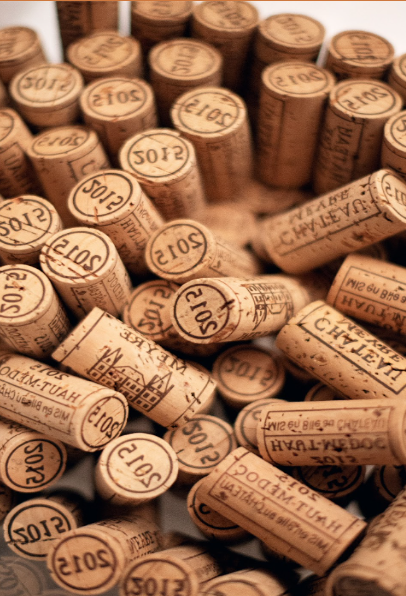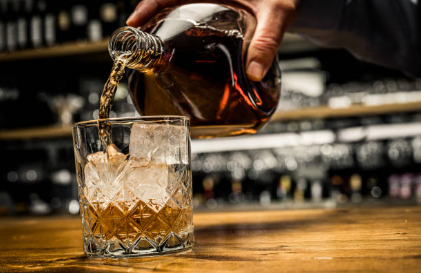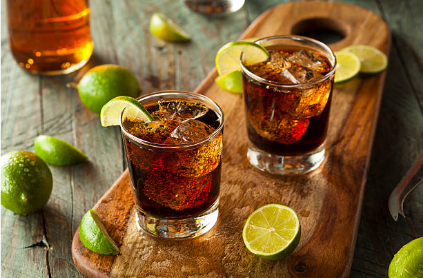2024 Overview of the US Spirits Market
Executive Summary
The U.S. spirits market, while valued at over $80 billion, is seeing slight growth due to rising demand for Tequila, RTD’s. However, the overall category is a concern as destocking is continuing and recent 2024 wholesaler sales not matching up with stronger retailer sales. This downturn is related to changing consumer habits, economic factors and inflation have led some to impact. The market is also shifting toward health-conscious choices like low-alcohol, non-alcoholic, and cannabis-infused drinks. E-commerce and innovative distribution strategies are key to reaching changing consumer behaviors. Despite challenges like economic uncertainty and competition, the market’s growth depends on brands adapting to these trends and stabilization.

2024 Overall Summary
In the last 52 weeks (L52), the Spirits category remained flat in dollar sales, though 9L case volume increased by +1.7%. Excluding Prepared Cocktails, the Spirits category experienced a decline of -1.3% in dollars. This was saved and driven by Tequila and RTDs contribution.
Prepared Cocktails continue to gain momentum, increasing their share of the category by +1.3 points and growing dollar sales by +16.5%. This segment includes both Ready-to-Drink and Ready-to-Serve options, with Ready-to-Drink growing by +20% in dollars and Ready-to-Serve increasing by +8%. Meanwhile, Whiskey and Vodka are losing share, down -1.3 points compared to a year ago. Whiskey dollars declined by -2.0%, while Vodka saw a sharper drop, down -8%.
Tequila stands out as a bright spot, gaining +1.1 share points in the Spirits category and achieving dollar growth of +7.3%. Cordials, though declining by -0.9%, are performing better than the overall Spirits category.
Non-Alcoholic Spirits continue to shine, with dollar sales surging by 85.4%, though they remain a small portion of the total market.
Latest survey on U.S. home bars points to unchanged consumer pantry levels; Data relatively unchanged since September
Headwinds, but not new. Survey data (via Bump Williams Consulting) showed less drinking (27% decreased consumption, 56% stayed the same, 16% increased).
Gallup reports that over the past two years, the percentage of adults who believe that moderate consumption of alcohol is not healthy has increased from 30% to 45%. This is driven by people under 30.
US Wholesaler Data: Inventory Levels Remain Elevated and Margins decline
Control States
2024 Control States Results Total Control States spirits sales 9L volume declined by -1.5% compared to year leading to a -1.8% $Vol decrease with a negative -0.3% price mix. Over the past 12 months, the 9L volume declined by -0.9% with a -0.3% decline in $Vol providing a +0.6% price mix. During 2024, Control states a true read of consumer behavior and a clean read on brand health.
Rum
The demand for rum spirits in the U.S. is being driven by:
- Cultural influences/innovation
- Craft cocktails/mixology with rum as a base spirit
- Exploration within sophisticated taste profiles
- Premium run brands/single origin varieties has elevated the spirit’s status
- Cultural factors such as: influence of Caribbean/Latin

Whiskey
The demand for whiskey spirits in the U.S. is being driven by:
- Quality and authenticity
- craftsmanship, heritage, and rich flavor profiles
- Mixology culture amongst a younger audience
- Whiskey’s diversity such as: bourbon, rye, and scotch ensures its relevance across different demographics.
Deep cultural roots / quality and innovation

Vodka
- The vodka category still reigns supreme in volume terms among all spirits in the U.S. market at 75 million cases in 2024, according to Impact Databank. But growth has been challenged the past couple years as consumers have gravitated to RTDs, which are now the second-largest spirits category at nearly 65 million cases.
- Tito’s long growth run came to an end in 2024, albeit with only a 1.5% decline last year, according to Impact Databank’s estimate. Tito’s remains the largest seller among all spirits brands at more than $2.5 billion in retail dollar terms
- One significant contributor is vodka’s versatility as a base spirit in cocktails. The increasing interest in low-calorie/sugar beverages has made vodka a popular option within health conscious cocktails.
- Steady demand for vodka in the U.S. with both traditional and innovative offerings.
Gin
The demand for gin spirits in the U.S. is being driven by:
- evolving consumer preferencesthe broader appeal of premiumization.
- Gin has experienced a resurgence as consumers embrace its versatility and complex botanical profiles.
- The rise of craft distilleries, which have introduced innovative and locally sourced gins that are considered “sophisticated”.
- Associated with high-quality mixology/modern drinking experiences.
- Wellness and mindful drinking has encouraged a shift toward spirits with natural ingredients and lower-calorie options. Gin is often marketed as a “lighter” spirit.
Tequila
- The demand for tequila spirits in the U.S. has surged due to:
- including shifting consumer preferences/ cultural influences.
- Tequila, rooted in Mexican heritage, resonates with consumers seeking unique, story-driven beverages.
- Premiumization; Consumers are increasingly willing to spend on higher-quality products,
- Tequila is often perceived as a healthier spirit option due to its natural production process and lower calorie count compared to some other alcoholic beverages
